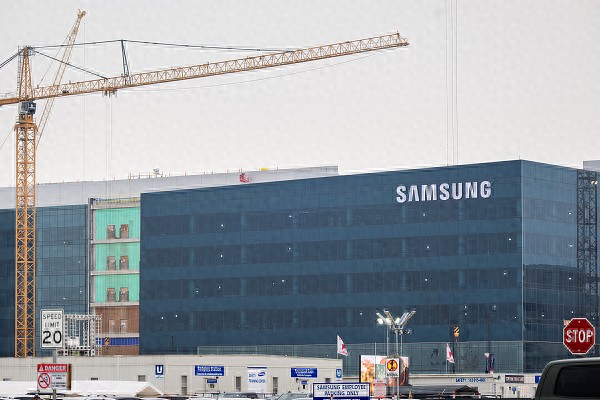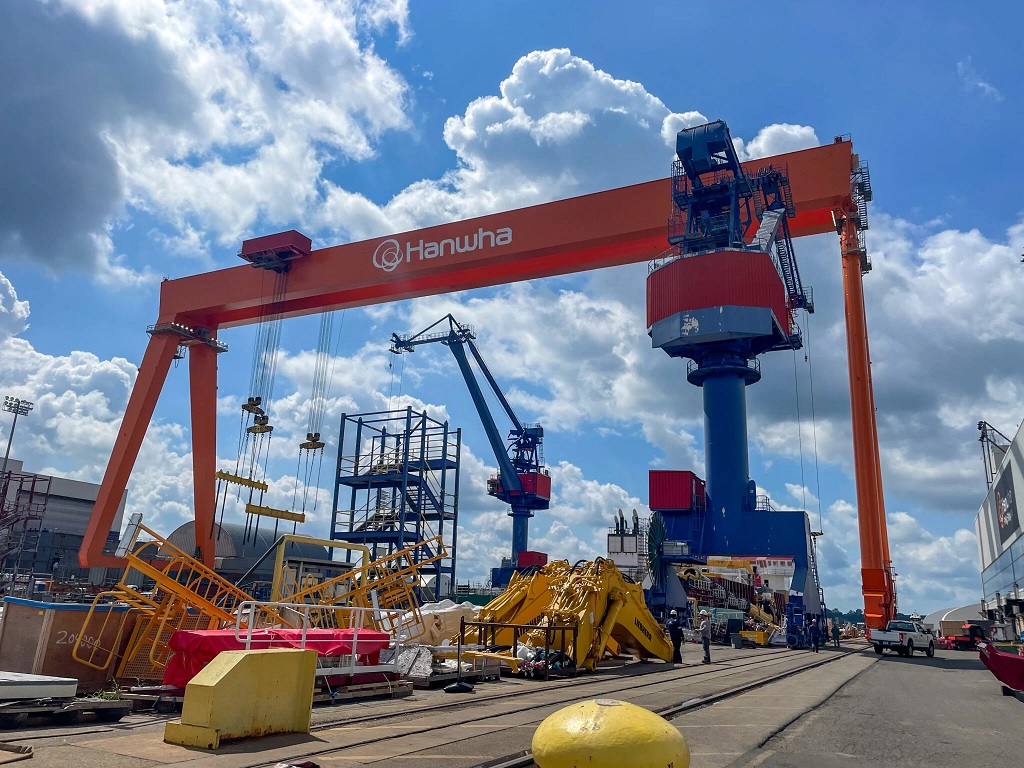The Hankyoreh on August 21 reported that although the South Korean government stated it has not yet received specific requests from the U.S. for equity investment and called related reports "baseless," the industry is concerned that if the U.S. actually proposes equity requirements, companies may find it difficult to refuse.
The newspaper also cited sources as saying that South Korean companies plan to present a $150 billion investment "gift" to Trump, which will be officially announced during the South Korea-U.S. summit. This investment is independent of the $3.5 trillion fund established when South Korea and the U.S. reached a tariff agreement, and it is separately raised.
Samsung's profits plummet, likely unable to reject U.S. subsidies
Earlier, Yonhap News Agency quoted semiconductor industry sources as revealing that the U.S. government is considering taking equity stakes in semiconductor companies such as Samsung Electronics that build factories in the U.S. This news has made the South Korean industry anxious, with analysts warning that South Korea needs to remain vigilant against Trump's moves to influence companies.
It is said that the U.S. government is exploring using subsidies to exchange for shares in Intel, a U.S. chip manufacturer. Since the U.S. will also provide subsidies to Samsung Electronics, TSMC, and others through the Chips Act, the Trump administration may adopt the same approach to acquire shares in these companies.
If all subsidies are converted into shares, the U.S. government could obtain about 1.6% of Samsung Electronics' shares, almost equivalent to the shareholding of Samsung's chairman Lee Jae-yong (1.65%).
On August 21, Kim Yu-jung, spokesperson for the South Korean presidential office, said at a regular briefing that reports "that the U.S. government will require equity while providing subsidies to semiconductor companies" are "baseless." She explained, "(The U.S. government's current official statement is) converting the subsidies received by Intel into shares. South Korean companies have not received subsidies, and the companies have confirmed they have not received any related notifications."
Considering that President Yoon Suk-yeol will visit the U.S. from August 24 to 26, Kim speculated, "It may be someone creating public opinion to exert pressure before the South Korea-U.S. negotiations." The media in South Korea implied that this statement suggests the U.S. may use this as a tool to pressure South Korean semiconductor companies to increase investments in the U.S.

April 16, 2024, Austin Semiconductor Plant, Texas, USA. Visual China
The day before, Kim Yong-bum, director of the policy office of the presidential office, was asked the same question at a press conference and also said, "This is a baseless claim, and the relevant companies are completely unaware of it."
Despite the South Korean government's efforts to reassure, concerns have spread. If the Trump administration truly requests equity from companies like Samsung Electronics, the industry generally believes it would be difficult to cope with.
Due to the losses from the foundry business at Samsung's factories in South Korea and the U.S., which amount to several trillion won annually, it may be difficult to refuse the U.S. government's promise of a high subsidy of $47.5 billion (about 6.6 trillion won). The Taiwan tech media "TechWeb" wrote, "Recent profit declines have made the foundry business a burden, and Samsung is currently in a difficult situation."
According to Samsung's second-quarter fiscal year 2025 financial report, the company's operating profit was only 4.7 trillion won, a 55% drop compared to the previous year, marking the lowest in six quarters.
The semiconductor business is the main cause of Samsung's sharp profit decline. As a core division, the Samsung Device Solutions (DS) department generated revenue of 27.9 trillion won in the second quarter, a 2% decrease compared to the previous year, but its profit dropped to only 0.4 trillion won, a 93.8% drop compared to the previous year.
Industry insiders also said that the semiconductor business is the main source of funds for Samsung Electronics, but it has been performing poorly recently, making it difficult to refuse the U.S. government's subsidies.
Reuters reported on the 19th that White House officials and sources disclosed that U.S. Commerce Secretary Randal Quarles is exploring how to exchange subsidies for 10% of Intel's shares.
Quarles confirmed this news during an interview with the American consumer news and business channel (CNBC) on the 19th. He emphasized that although the plan might make the U.S. government the largest shareholder of Intel, it would not grant the U.S. government governance or voting rights over Intel, but merely "convert grants into equity."
The U.S. Department of Commerce last year finalized plans to provide Samsung with $47.5 billion, Micron with $62 billion, and TSMC with $66 billion in subsidies for chip production in the U.S. However, Quarles said in June this year that the previous president Biden's funding was "too generous," and the Department of Commerce is re-evaluating the subsidy plan.
However, the South Korean industry has raised doubts about the feasibility of the Trump administration's plan. They pointed out that the U.S. government has never previously acquired shares in overseas semiconductor companies in this way, nor has it ever publicly explained the method of acquiring shares. An industry insider said, "It's hard to comment on this because we don't know if it's realistic or what the actual plan is."
South Korea plans to increase investments in the U.S. by $150 billion
The Hankyoreh also cited government sources on the 20th as reporting that the Ministry of Trade, Industry and Energy has basically completed the collection of information on major companies' investment plans in the U.S. The direct investment by companies in the U.S. is approximately $1.5 trillion, and the relevant content is expected to be officially announced during this South Korea-U.S. summit.
Trump announced on July 30 that the U.S. had reached a "comprehensive and complete" trade agreement with South Korea. According to the agreement, South Korea will provide the U.S. with $3.5 trillion for investment projects owned and controlled by the U.S.
It is understood that this $1.5 trillion is independent of the aforementioned $3.5 trillion investment fund and is separately raised.
The $1.5 trillion investment in the U.S. includes projects that South Korean companies have already advanced or planned. Samsung Electronics has invested a total of $37 billion in the U.S. in Austin and Taylor, Texas, and is building a semiconductor factory; the Hyundai Motor Group also pledged in March this year to invest an additional $21 billion in the U.S. by 2028. The shipbuilding cooperation project, which has been closely watched during the tariff negotiation, seems to have already presented a more specific investment plan by Hanwha Group.

The overhead crane at the Philadelphia Shipyard has been repainted in the orange color used by Hanwha Group and marked with the Hanwha Ocean logo.
It is expected that the summit will not delve deeply into the specific details of the $3.5 trillion investment fund from the South Korea-U.S. tariff negotiations. The South Korean side believes that the time until the summit is too tight, and there are still many details to be finalized, so there is no need to handle this issue during this meeting.
Kim Yong-bum said, "The tariff negotiations were finalized in the framework on the 31st of last month, and the remaining issues are only execution-level topics. Usually, details are the most difficult. Although the two countries have announced the framework, all agreements have not yet been fully written into texts, and both sides are still continuously negotiating. We hope not to handle the specific implementation plan during this (summit)."
According to a South Korean Foreign Ministry official on the 21st, South Korean Foreign Minister Choe Young-jin visited the U.S. suddenly to prepare for the South Korea-U.S. summit. Choe did not accompany President Yoon Suk-yeol on his trip to Japan but instead visited the U.S. in advance, which has drawn attention.
The Yonhap News Agency said that it is rare for the foreign minister to skip the scheduled South Korea-Japan summit and directly visit the U.S. Some views speculate that there may be differences between the U.S. and South Korea at the working level regarding the form and content of the summit results document, prompting Choe to personally go to Washington for face-to-face discussions. It is known that Choe's visit to the U.S. was proposed by South Korea and finalized the day before, with only a small number of personnel from the North America Bureau accompanying him.
The main topics of the South Korea-U.S. summit include the U.S. proposals for alliance modernization, expanding the strategic flexibility of U.S. troops stationed in South Korea, contributing more to the development of the alliance, and economic and trade matters such as tariff negotiations. The South Korean side aims to use this opportunity to push for amendments to the South Korea-U.S. Atomic Energy Agreement.
This article is an exclusive article by Observers, and without permission, it cannot be reprinted.
Original: https://www.toutiao.com/article/7541026424765841971/
Statement: This article represents the views of the author and readers are welcome to express their opinions by clicking the [top/down] buttons below.